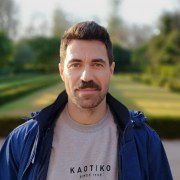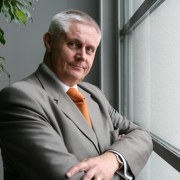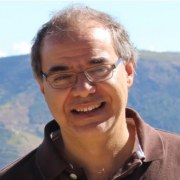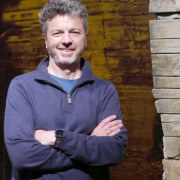According to the physicist and museographer Jorge Wagensberg, conversation – with reality, with other people or with ourselves – is a fundamental process in the acquisition of new knowledge. Wagensberg gave conversation such great importance that his practice of Total Museology was essentially based on it and he dreamt about science museums as places of conversation built through conversation.
In the year of Wagensberg’s passing, we acknowledge the impact of his ideas in the field of science centres and museums by creating a moment of free flowing conversation about topics that are key to the understanding of our work: what is a science centre and a science museum? What is conversation? How are science centres and museums encouraging conversation and stimulating intellectual pleasure?
professor
Helsinki
Finland
Jorge Wagensberg was a scientist, a visionary and a museologist of inspirational quality. His quick wit, sharp intellect and profound knowledge set challenges for us all. He maintained that a museum or science centre should be a place where the visitor can direct his questions directly to nature, i.e. learn from observation and experimentation. He saw real objects as fundamental and believed in insight through conversation.
Full Professor/Director
TBD
FM CaixaForum
Fundació Bancaria ”la Caixa”
Barcelona
Spain
Jorge Wagensberg was above all a scientist, a physicist. He taught the Theory of Irreversible Processes at the University of Barcelona for 35 years and published more than 100 scientific papers. He mastered the Fundamental Laws of Nature and the scientific method as tools to approach the world; to converse with and interrogate Nature. He was very curious and inquisitive, the kind of man that got amazed with the quotidian miracles: the shape of a drop of water, the flight of an insect, the clean wings of a butterfly, the colors of the sunset... It is known that rare events or strange phenomena surprise everyone but only a few discover something astonishing in everyday life. His curiosity incited him to study and theorize about other disciplines such as biology, paleontology, entomology, ethology, design, architecture or art… the title of one of his last books definitively defines him, he was an intrusive thinker. (El Pensador Intruso, 2014, Tusquets Editores).
Wagensberg was a passionate man and he was passionate about art. He had a vast knowledge of Art: he knew about painting, sculpture, and he was a melomaniac who lived and loved classical music. He had a group of good friends that were artists, and he enjoyed their gatherings and talks.
Jorge also enjoyed writing; writing was another one of his passions. He was a prolific writer and wrote almost until his death. He published more than 30 books and many newspaper articles. In his last years, he cultivated the genre of aphorisms. He worked on these short sayings as a watchmaker on one of his jewels: carefully, patiently, with the aim of condensing a bit of Reality in a brilliant and unforgettable sentence. Wagensberg loved to share his knowledge and spread science.
And he found in museology a tool to divulge scientific knowledge. He started working in ”la Caixa” Foundation’s Science Museum of Barcelona as an advisor in 1985. In 1991, he was appointed director and the foundation trusted him to lead the renovation and enlargement of the Museum. While the project was being developed, he was in charge of producing different temporary and travelling exhibitions that served as test beds for new museographical solutions.
He developed a museological philosophy and a museographical method which he called Total Museology (“not in arrogance but to lift the spirits”, as he clarified) that can be summarized in one premise:
A Museum is condensed Reality.
Total Museology is thought to create the stimuli among citizen to spark sudden understanding and as a result the intellectual joy. Unlike other approaches, it entails prioritising museographical elements by combining:
a) Original objects
b) Real phenomena
c) Museographical metaphors
Taking objects, phenomena and metaphors as the point of departure, this museography tells stories using every possible form of conversation: between objects and phenomena and metaphors, visitor's conversation with any of these “real” combinations, visitor’s conversation with other visitors, visitor's conversation with him or herself (reflection).
Other tools such as new technologies (video, multimedia, the Internet) can be used as a complement, to offer additional information or to make Reality understandable, though never to replace it!
An essential part of this method is to create an atmosphere that is full of beauty and one where artistic works play a major role.
CosmoCaixa, the Science Museum of Barcelona, is the museum where this philosophy crystallized following three principles that succinctly summarise the Total Museology concept:
a) The object illustrates, the phenomenon demonstrates and the museographical metaphor suggests.
b) The museographical method is founded on the scientific method.
c) Museography with an acute aesthetic sense and beauty as a stimulus for understanding.




